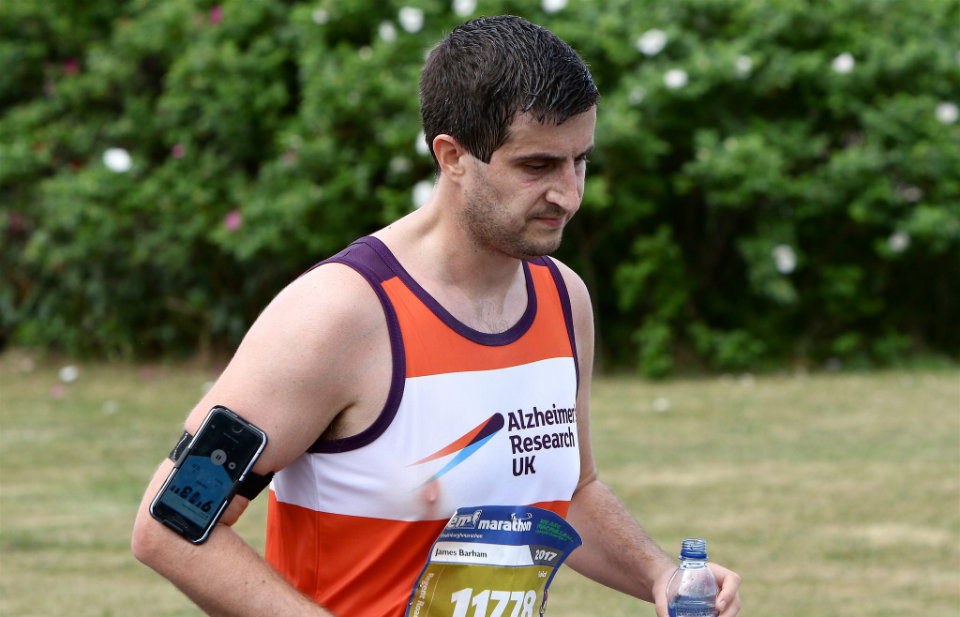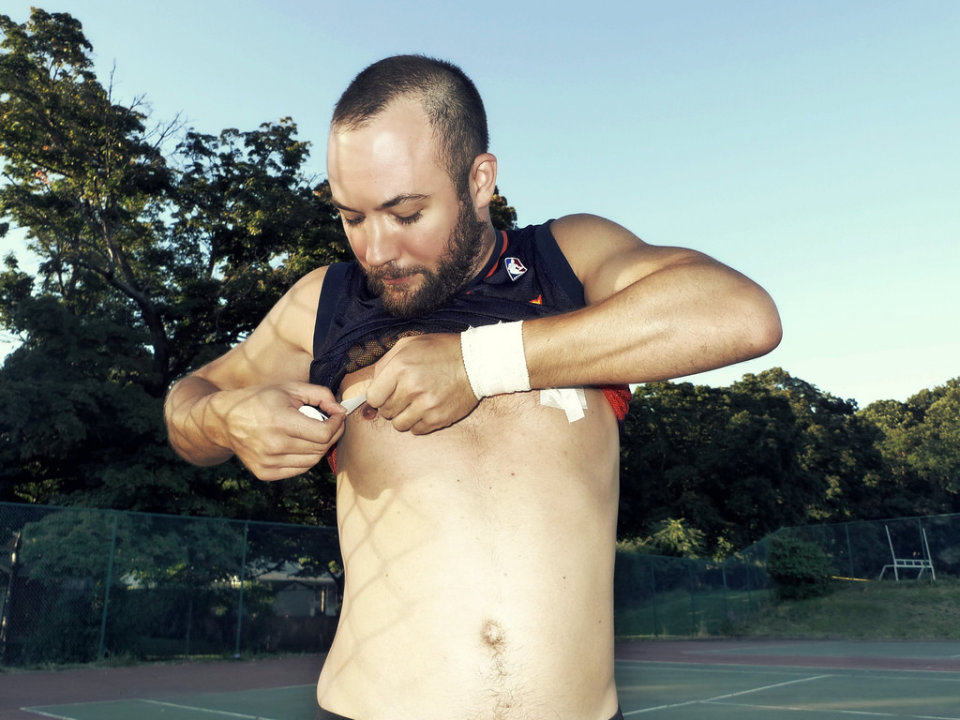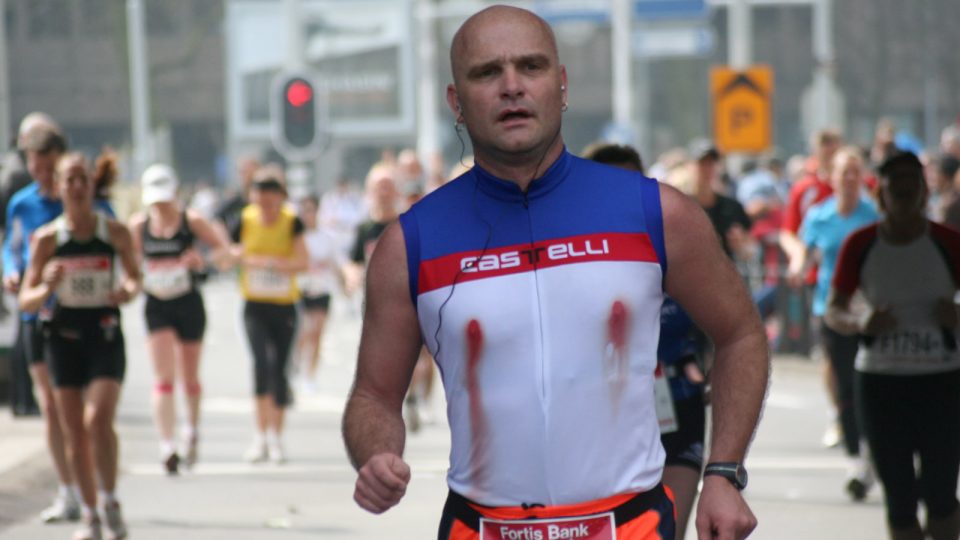You’re ready for your first marathon, but did you forget a hidden running hazard?
We know a thing or two about the downside of running. According to our research, nipple chafing or jogger’s nipple is one of the most painful side effects/sport injuries for runners, which is why we recommend Kinesiology Tape—also known as nipple tape.
Diagnosis: What is Runner’s Nipple or Jogger’s Nipple
The potential for sore, red, irritated nipples while running has been around so long, this condition has earned nicknames, including Red Eleven, Raver’s Nipple, Big Qs, Stingers, Nipple Chafe and more.
Chafing is irritation of the skin due to repetitive friction which may arise from contact between skin and clothing or skin and skin, especially during a prolonged period of exercise. When the nipples become irritated and tend for too long, then open wounds could develop with bleeding.
While every athlete is different, jogger’s nipple or runner’s Nipple symptoms are the same:
- irritation
- pain
- soreness
- itching
- cracking of skin
- inflammation
- discolouration
- in some cases, skin dryness
- even bleeding
Take no action when these symptoms occur and nipple areas can begin to crack and bleed. The most often reason this takes place has to do with wearing coarse or cotton tops that continually rub with each footfall.
The risk gets worse in the winter when the skin tends to harden, say experts.

Who Gets Runner’s Nipple or Jogger’s Nipple?
Jogger’s nipple commonly occurs in people who run long distances, particularly in cool weather when nipples are more likely to be erect.
A study discovered that jogger’s nipple is the most common lesions found in marathons and more than 35 percent of people who ran more than 60km a week experienced jogger’s nipple, while less than 4 percent of those who ran 24 km a week did.
Jogger’s nipple or runner’s n ipple is most commonly seen in male marathoners and long distance runners as female runners suffer less common nipple chafing due to protection from soft padding in sports brassieres.
6 Steps You Can Take to Avoid Jogger’s Nipple and Runner’s Nipple:
Although nipple chafing is a common issue for runners, you can prevent it with these six tips:
- Wear form-fitting shirts and tops or compression vest so the fabric doesn’t move around.
- Women can choose seamless bras made of soft fibre to constrict breast movement.
- Avoid cotton shirts when running, especially if there’s nothing between you and the shirt but skin. Try wearing high quality moisture-wicking running t-shirt to avoid chafing.
- Applying a lubricant, such as Vaseline or Bodyglide, to your nipples to reduce friction.
- Fo women, choose a soft fibre and seamless bra, for men, wear tops made from soft material such as Crossline running tees.
- Discover nipple tape or nip-guards, available at sporting goods retailers and/or e-commerce store.
- Keep yourself hydrated. Water is important to keep the body hydrated and performance at its best as well as help to reduce the risk of chafing. Drink plenty of water before, during and after exercise will enable you to perspire freely so the perspiration doesn’t dry into salt crystals that can aggravate the chafing.
How to Get Rid of Chafing?
If you didn’t manage to avoid running chafing, it’s time to treat and smooth your sensitive area. Here’s some of the effective nipple chafing treatment:
- Gently clean your chafed skin with lukewarm water and dry it thoroughly.
- Avoid washing the affected area with chemicals that might aggravate or worsen your irritated area.
- Cover the chafed area with breathable gauze.
- If infection occurred, apply antibiotic ointment.
- Seek a doctor if there’s no improvement (usually heal within a week) from your self-care measures.
Why Not Use Ordinary Adhesive Tape For Runner’s Nipple?
Ordinary adhesive tape isn’t up to the job because it’s not designed to be kind to skin. Nipple tape is fashioned of a specific cotton-based adhesive that won’t chafe skin areas, no matter how much your chest jiggles during your run.
Sweat. Stretch. Breathe. Go! This tape is manufactured for endurance and comfort so even if you sweat so much you are pretty sure only your water bottle saves you from dehydration, this tape product holds fast and doesn’t slip or fall off, even during the most daunting runs.

What Are The Best Nipple Tapes For Runners?
There are many nipples protections suitable for runners. Choose a breathable nipple bandage that protects your skin from the friction.
The nip guards or nipple tapes should also be waterproof so it would fall off when you sweat. Some other considerations includes, the price, concealability and the size.
The Proper Use of Nipple Tape For Running
Doctors recommend inspecting both nipples to make sure the areas are clean and dry before applying an anti-chafing balm to the area. Cut a one-inch section of nipple tape from the roll and divide the section by two for application.
The size of your nipple area will obviously determine whether you need a larger piece to do the job.
Will this clever tape work for every runner? Unfortunately, some runners can’t tolerate it because their skin is super-sensitive and reacts to any type of stick-on product. The range of reactions these runners could experience run the gamut from pain to rashes.
Doctors have found that some athletes are literally allergic to nipple tape. Further, should nipple areas be scratched or cut, this tape could introduce bacteria to the area, especially once sweating commences.
Thin-skinned individuals (especially older runners) could suffer a reaction to pulling this type of tape off, too.

How to Get The Nipple Tape Off Correctly Without Screaming
Experts recommend getting into a hot shower wearing the tape, then rubbing a thick mineral oil over the area, slowing softening the tape until it can be gently peeled away a little at a time while holding surrounding skin down to create a taut area.
Running coaches offer this advice if you’re new at this technique: Concentrate on peeling your nipple away from the application, not peeling away the tape away from the nipple area.
Are you allowed to whimper or flinch during this process? Of course! You’re all alone, so your running buddies don’t have to see you freak out—though there’s a good chance they’re busy grimacing at home while engaged in their own tape removal ritual!
Do you have a nipple tape story to tell? Feel free to share it with us.
More About Nipple Chafing and Nipple Tape For Running
How do you fix nipple chafing?
Gently clean your chafed skin with lukewarm water and dry it thoroughly. Avoid washing the affected area with chemicals that might aggravate or worsen your irritated area. Cover the chafed area with breathable gauze. If infection occurred, apply antibiotic ointment. Seek a doctor if there’s no improvement (usually heal within a week) from your self-care measures.
Why do nipples bleed when running?
Nipple bleeding occurred as a result of chafing, which is the irritation of the skin due to repetitive friction which may arise from contact between skin and clothing or skin and skin, especially during a prolonged period of exercise. When the nipples become irritated and tend for too long, then open wounds could develop with bleeding.
Why is my nipple chafing?
Jogger’s nipple commonly occurs in people who run long distances, particularly in cool weather when nipples are more likely to be erect. Nipple chafing is most commonly seen in male long distance runners as female runners suffer less common nipple chafing due to protection from soft padding in sports brassieres.
Are joggers nipples real?
The potential for sore, red, irritated nipples while running has been around so long, this condition has earned nicknames, including Red Eleven, Raver’s Nipple, Big Qs, Stingers, Nipple Chafe and more. While every athlete is different, jogger’s nipple symptoms are the same: irritation, pain, soreness, itching, inflammation, skin dryness and even bleeding.
Featured Photo Credit: Flickr/seth2dana





